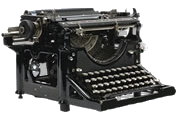The Allure of the Private Bomb Shelter
(People Today Magazine, 1955)
This is a consumer report concerning various bomb shelter plans that were commercially available to the American public in 1955:
The most elaborate of five government-approved home bomb shelters is a combination tunnel and emergency exit in reinforced concrete, extending outward under ground from cellar walls It holds six persons and offers maximum protection from all effects of an atomic explosion… But the FCDA (Federal Civil Defense Administration) also recommends a practical type type that can be put together by any do-it-yourselfer for around $20.00.
